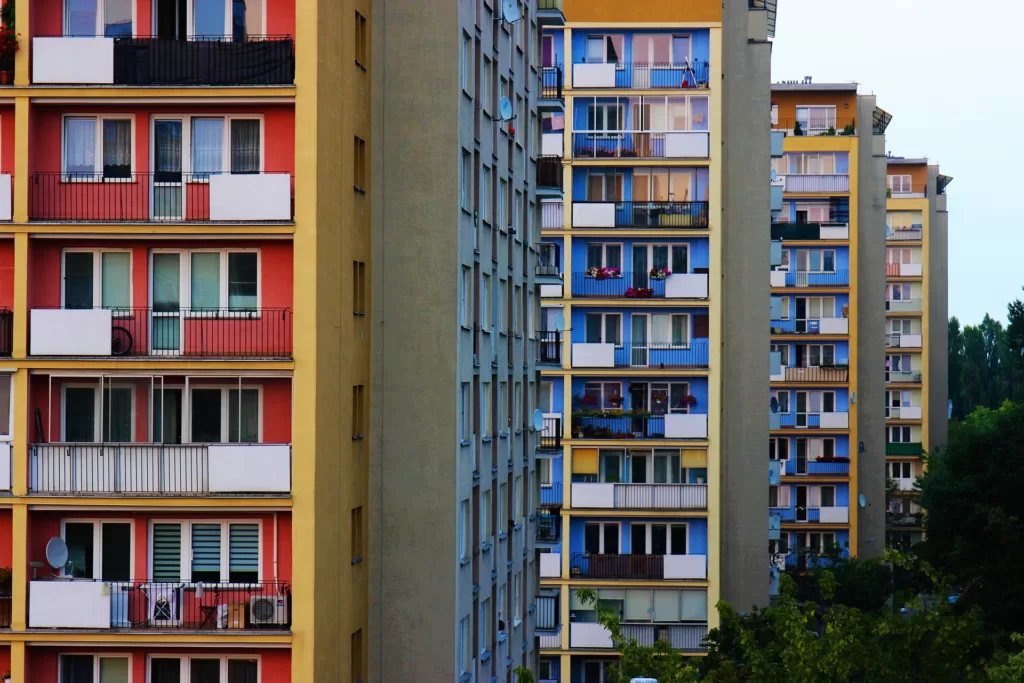Cities and their inhabitants are a main driver of climate change and, ironically, potentially the main victims. Here's how that could be fixed.
 Cities are vulnerable to the impacts of global warming, due to the concentration of people and infrastructure. : Priscilla Du Preez via Unsplash Unsplash Licence
Cities are vulnerable to the impacts of global warming, due to the concentration of people and infrastructure. : Priscilla Du Preez via Unsplash Unsplash Licence
Cities and their inhabitants are a main driver of climate change and, ironically, potentially the main victims. Here’s how that could be fixed.
Stand on a street corner in a big city on a hot day and have a look around at the towers of concrete, glass and steel. If the temperature is in the 30s, there’s a good chance it’ll feel substantially hotter.
That’s the urban heat island effect warming you up.
All that steel and concrete absorbs heat. Higher outdoor temperatures pose a threat to human health leading to an increase in heat-related illnesses, particularly for vulnerable populations, such as the elderly and young children. In some places, it can be a killer.
The urban heat island also has economic impacts, such as increased energy demand for air conditioning up to almost five percent per each degree of external temperature rise. A 2016 estimate indicated cooling needs and costs in 2050 will be 750 percent higher.
Ironically, city dwellers are one of the main causes of climate change, but at the same time, their actions “boomerang” back and reinforce the impacts on them and they become the main victims.
As we head towards 2 degrees warming, the combined health risk and increasing economic costs make decarbonising the urban environment even more urgent. A key solution could be to re-use existing buildings and transform the way they behave.
Decarbonsing our cities includes a three-step approach: Reducing the carbon emissions related to the operation of buildings (operational carbon); reducing carbon emissions related to the construction of buildings (embodied carbon); and increasing the active role of cities in producing resources and restoring the urban environment.
Reducing operational carbon — emissions associated with day-to-day activities of a city, such as energy consumption for cooling, lighting, waste management and transportation — is a complex challenge.
Beyond improving thermal performance of building stock, cities can take advantage of other solutions such as tackling carbon emissions at the earlier stages of the building process.
The World Green Building Council’s net-zero emissions commitment proposes a plan to reduce to zero not only operational carbon but also embodied carbon emissions from building portfolios by 2050. Indeed, the manufacturing and transportation of building materials and construction processes contribute significantly to the embodied carbon of buildings, accounting for 11 percent of global energy-related carbon emissions.
All that steel and cement used for structural purposes and lift systems in high-rise buildings are associated with the majority of their embodied carbon. Simple rules such as the greater incentives to recycle steel could save up to 60 percent of these emissions.
However, this is not enough to achieve the ambitious 2050 goals. A significant opportunity to tackle embodied emissions is the adaptive reuse of buildings already available in our cities. The practice of adapting buildings involves a range of changes that can vary from preserving the building’s historical and cultural significance to transforming the building’s function for other purposes.
While very simple in its conception, adaptive reuse can be transformative.It’s estimated only one-third of the 2050 residential building stock will be composed of existing buildings, while the vast majority will be new housing developments. This approach is further supported by existing policies and green building rating tools, which indirectly encourage cycles of demolition and rebuilding over retrofit and adaptation.
If governments don’t take action immediately, incentivising the adoption of novel design approaches, we lose the possibility to reduce the energy consumed by cities by 70 percent.
A successful example is the recent renovation of the Quay Quarter Tower in Sydney, which retained a significant proportion of the old building, almost 65 percent of the original structure and 95 percent of the original core, saving 12,000 tonnes of carbon dioxide.
With over half of the global population residing in urban areas, cities are significant contributors to climate change. This is because they consume a major share of the world’s energy (around 75 percent) and account for the largest production of greenhouse gas emissions up to 50-60 percent of the total emissions.
Cities are also highly vulnerable to the impacts of global warming, due to the concentration of people, wealth and infrastructure.
In many cities, low-income communities are more likely to live in higher-density housing and areas with fewer green spaces, less tree cover and more heat-absorbing surfaces.
As part of the discussion on “climate justice”, inequity across communities is a persistent issue. Disadvantaged communities are disproportionately exposed to the challenges of higher density living. They often lack access to emergency plans and lack resources for training and preventative measures for disasters.
Considering that buildings are among the major contributors to climate change, accounting for 40 percent of the total world carbon emissions, improving the way they are designed and built can be transformative. Even more so in cities, where high-rise buildings require more energy and materials per floor area compared to low-rise buildings.
Saving our future requires a long-term vision and commitment to sustainability, as well as a willingness to invest in innovative solutions and technologies. By adopting a comprehensive approach, cities can significantly reduce their carbon footprint and contribute to global efforts to address climate change.
Dr. Arianna Brambilla is an Associate Professor in Architecture at the University of Sydney. Her research offers a novel philosophical design approach in which buildings, new or renovated, are in balance with nature and become restores or regenerators for the environment instead of being consumers of resources.
Dr. Ozgur Gocer is a Senior Lecturer in Sustainable Design at the University of Sydney. Her research interest and expertise focus on investigating the built environment through the lenses of occupant experience with a view of informing design and performance improvements.
Originally published under Creative Commons by 360info™.
Editors Note: In the story “Hot house” sent at: 14/03/2023 11:29.
This is a corrected repeat.














